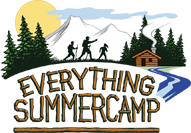Hey, Flag Fans!
An absolute blast, Capture the Flag has long been a staple of summer camp as well as playgrounds and backyard fun for kids of all ages.
Children love the strategy, teamwork, and physical activity it takes to achieve victory in this game. The history of Capture the Flag goes back hundreds, even thousands of years. But where did this exciting game come from and how did it become a staple of summer camps?
Why is Capture the Flag Such a Hit with Kids?

The History of Capture the Flag

Long ago, flags were more than just a symbol of identity or pride in a nation or group. They were paraded by a flag bearer on the battlefield as a source of moral support. Having the flag flying meant your troop was still putting up a fight. This is why in our national anthem, the lyric proclaims “…gave proof through the night that our flag was still there.” The flag still flying was proof that the war was still on.
We owe the recorded rules of Capture the Flag to one German gymnast named Wilhelm Lübeck who put them down in the 1860 German gymnastic manual. These were the earliest known set of rules for the game. He didn’t call it Capture the Flag, though. He called it Fahnenbarlauf—named after an older European variation of the game called ‘Barlaufen’.
With such an enduring history to it, Capture the Flag is a true testament to the power of play and the importance of tradition in the summer camp experience. Make sure you get involved in a fun game of flag capturing at camp this year.
How to Play Capture the Flag
To play the game Capture the Flag, the playing field is divided into two clearly designated halves, or territories. Everybody splits into two teams—one to each territory. Each territory has a "flag" which is most often a piece of fabric (but can really be anything you want) that they have hidden or otherwise protected within their section of the playing field.
Players then venture into the opposing team's territory, grab the flag and attempt to return with it to their territory without being tagged.

More of Our Favorite Outdoor Camp Games
Frisbee
This game is great because you only need two people to get started, and there's no limit on how many more players can join in. The Nite Ize FlashFlight® Light Up Flying Disc with Disc-O Select™ was made for people who are serious about the sport and satisfies those who just want to have fun with their friends.
Your choice of 6 LED colors; red, purple, blue, teal, green, and white (for in the dark play), and a battery life of 20 hours. No need to worry about water because the Nite Ize FlashFlight® is water-resistant and floats. Add this packable pastime to their trunk and they’ll always have a way to break the ice at camp.
Bocce
Normally, Bocce is limited to the outdoors because the weight of the balls can cause damage if thrown inside. We knew there had to be a way past that limitation, to expand the playing field no matter where boredom struck. At Everything Summer Camp each of our bocce sets is designed for both indoor or outdoor play. Tossing the lighter balls leads to more creative placement of the target ball and allows for easy travel. If you aren’t sure how to play Bocce, the target ball is thrown at random and then the players take turns tossing their throwing balls, aiming as close to the target ball as they can to gain more points.

Our like-a-hacky-sac find, The Outside Inside™ Freestyle Bocce Ball Set includes six, nylon throwing balls and one target ball filled with pellets. They’re stored in a nylon mesh pouch that cinches shut and is the most packable game other than cards.

The Outside Inside™ Backpack Bocce Ball Set has a more traditional look for an indoor/outdoor Bocce game. It includes eight, smaller than standard size (1.75”) low-density balls, one white target ball, a measuring tool for proper scoring, instructions, and a carrying pouch. Start a game anywhere with a pack like this.
Bag Toss
The ENO TrailFlyer™ Outdoor Game weighs in at just over two pounds and is designed to pack down to the size of a 32oz water bottle so it conveniently packs away for all your adventures! The setup uses the stakes provided so there are no knots needed to master this contest. Inspired by beloved games like Bean Bags and Skee-Ball, Eagles Nest Outfitters brought ease to traveling with your favorite games.

Horseshoes

There’s no need to let the weight of a horseshoe hold you back. Travel with this easy-to-pack Outside Inside™ Freestyle Horseshoes set. Weighing in at only 2.82 lbs; it includes four full-size rubber horseshoes, two rubber mats, two indoor stakes, two outdoor stakes, and a carry bag with instructions. This no-risk outdoor game will get your group moving without taking any dangerous hits or bumps. Play with as little as two people or as many as four.

Axe Throwing
Has your kid asked you if they can throw an axe yet? Surprise them with the Outside Inside™ Backpack Axe Throwing set. It includes 4 foam axes in 2 colors, a collapsible target, instructions, and a convenient travel bag.
The axes stick to the target by a gripper strip "blade" ensuring safe and fun gameplay for all ages. Hang it by the loop on a tree or on a window by the suction cup. Get them something new to throw and help them harness the power of focus, hand-eye coordination, and a healthy competitive edge.
Washer Toss
The Outside Inside™ Travel Washer Toss is easy to pack but difficult to master, this game comes with everything included. Sink the washers in the target and earn your bragging rights! Weighing in at less than 2 lbs this four-player game is sure to test everyone’s skill and humble a few people in the process.
Watercolor Kit
 An outdoor activity for when they need a little alone time. The Outside Inside™ Backpack Watercolor Kit includes 12 half-pan watercolors, a refillable brush, a 0.5 permanent marker, a 2B pencil, pallets, a sponge, a color sampler, a 30-page watercolor pad with sheets of a 185 g thickness, and a user manual. There are no rules or competition to this game. Give your child the gift of creation and watch them become more confident in themselves. This compact kit is recommended for Ages 12+, comes in its own case, and can fit in any travel bag you choose at 6.4” x 3.4” x .75”.
An outdoor activity for when they need a little alone time. The Outside Inside™ Backpack Watercolor Kit includes 12 half-pan watercolors, a refillable brush, a 0.5 permanent marker, a 2B pencil, pallets, a sponge, a color sampler, a 30-page watercolor pad with sheets of a 185 g thickness, and a user manual. There are no rules or competition to this game. Give your child the gift of creation and watch them become more confident in themselves. This compact kit is recommended for Ages 12+, comes in its own case, and can fit in any travel bag you choose at 6.4” x 3.4” x .75”.
I hope your time outdoors this summer is packed full of rewarding activities like Capture the Flag and Washer Toss. Thanks for reading and, as always, Happy Camping!
- John











